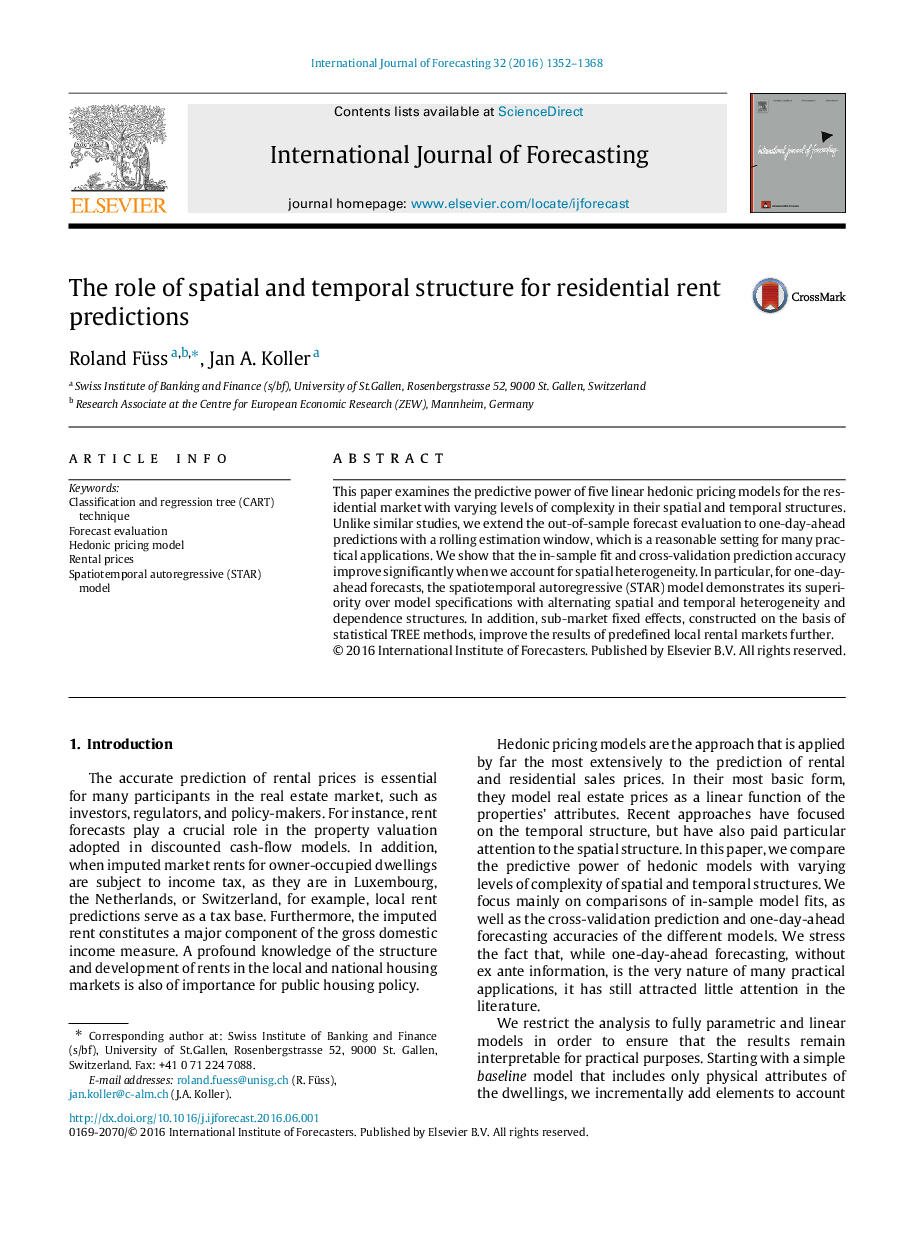| Article ID | Journal | Published Year | Pages | File Type |
|---|---|---|---|---|
| 5106413 | International Journal of Forecasting | 2016 | 17 Pages |
Abstract
This paper examines the predictive power of five linear hedonic pricing models for the residential market with varying levels of complexity in their spatial and temporal structures. Unlike similar studies, we extend the out-of-sample forecast evaluation to one-day-ahead predictions with a rolling estimation window, which is a reasonable setting for many practical applications. We show that the in-sample fit and cross-validation prediction accuracy improve significantly when we account for spatial heterogeneity. In particular, for one-day-ahead forecasts, the spatiotemporal autoregressive (STAR) model demonstrates its superiority over model specifications with alternating spatial and temporal heterogeneity and dependence structures. In addition, sub-market fixed effects, constructed on the basis of statistical TREE methods, improve the results of predefined local rental markets further.
Related Topics
Social Sciences and Humanities
Business, Management and Accounting
Business and International Management
Authors
Roland Füss, Jan A. Koller,
